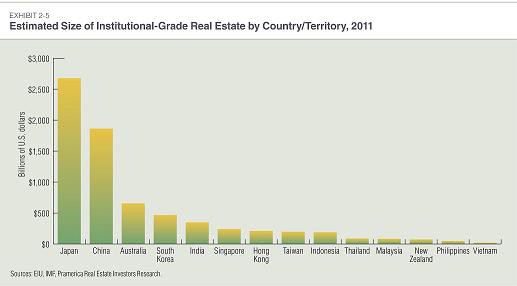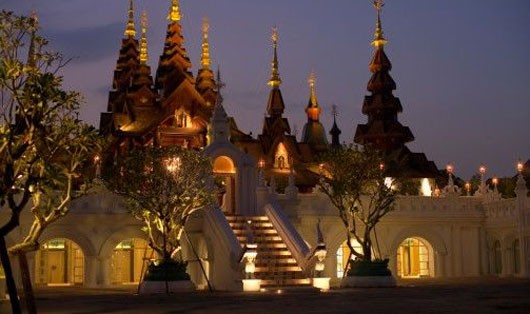Real estate in Southeast Asia a good investment
Post on: 8 Июнь, 2015 No Comment

Share
Southeast Asia is a land of opportunity, but have real estate investments in the region gone stale?
Dateline: Bangkok, Thailand
Historically, Asian cultures have had a preference for investing in real assets. Being able to own something you can see and touch is reassuring for many people, whether it happens to be gold, farmland, or sellable inventory.
Today, we’re taking a look at real estate in Southeast Asia – one of the fastest growing regions in the world in a continent where home and property ownership are arguably valued more than anywhere else.
Of course, Asia is a very diverse continent with different laws and ways of doing business. Before you start house hunting, you must first find out in what countries and under which conditions you are even able to buy property as a foreigner.
There are two types of land titles: freehold, and leasehold.
Freehold is how one would normally buy property In the United States and much of Europe. You own the property outright and are able to pass it on to heirs or sell it as you see fit.
Leasehold property is much like how it sounds. You lease the real estate (along with the land it sits on, if applicable) for a certain period of time – usually either 30, 99, or 999 years.
Depending on the local regulations, you may or may not be able to sell or pass the rights to the property onto relatives.
For the most part, investors looking to flip or rent want to look only at properties with a freehold title. There are exceptions, and investing in a well-priced, high quality condo in a good location, with a 999 year leasehold may not necessarily be a bad idea. A millennium is a long time.
But in most other situations, the clock starts ticking and the property starts depreciating as soon as you buy a leasehold property. If you receive a 30 year leasehold condo and want to sell it 25 years later, expect to only get whatever 5 years of rent is worth at that time.
Our FREE Offshore Strategy Session video makes it easy
Understanding freehold and leasehold is important because there are several countries in Asia where you cannot even own condos, land, houses, or any other property.
Only lease it on a long-term basis, until all rights go to the original owner – often the government.
Mainland China is one example of this. Other countries where this is also true are Indonesia. Myanmar, Brunei, and Laos.
In some places, things are a bit more complicated. Hong Kong is one such example.
Upon being transferred from the British to the Chinese in 1997, Beijing promised to keep a separate legal system for a period of at least 50 years.
Because of this, all property is “owned” on a leasehold basis until 2047. It’s generally accepted that all leases will be renewed at this time with little hassle. Most people say that if China’s central government did anything else, there would be massive chaos as people’s homes were to be taken from underneath them.
Nothing should be taken for granted, though. If there’s anything history teaches us, it’s that the unthinkable can sometimes happen and that governments should not be trusted to do the right thing.
Which countries in Southeast Asia are the best for investment?
Let’s start with the countries in Southeast Asia that are even possible buy property in as a foreign national. These are Singapore, Malaysia, the Philippines, Thailand, and Cambodia.
Singapore is by far the easiest real estate market to enter as a foreigner. The property market is transparent, information is easy to find on the internet, and the city-state has a robust economy where a shortage of land is likely to drive prices up in the long term.
However, Singapore is also one of the most expensive real estate markets in the world, often putting cities such as New York and London to shame. You’re going to need a plentiful amount of spare cash to buy here.
Furthermore, only condominium units can be bought by most foreigners.
If you want to purchase land, you’ll need to make an application to the government along with an even bigger amount of money usually tens of millions of dollars.
And if you’re thinking about parking your money in Singaporean property for safe-keeping, you’re not the only one. The country has been flooded by so many wealthy foreigners buying real estate that it was driving prices up beyond the reach of locals.

Because of this, the government imposed a 15% tax on the purchases of all foreign property investors in Singapore. While this is unlikely to drive ultra high net worth individuals away, it is a rather large tax that should be considered by potential investors.
To the north of Singapore, Malaysia is unique in that it is the only country in Southeast Asia where foreigners can easily own land as well as condominiums and landed homes. Malaysia is ideal for those seeking a wide variety of options.
Malaysia is relatively inexpensive compared to most of its neighbors, and can even be compared in price to countries much less developed. For example, the average price per square meter in Kuala Lumpur. Malaysia’s capital, is even less expensive to that in Jakarta, Indonesia’s capital.
There are some restrictions, though. Foreigners can only buy property in Malaysia that is sold for over a certain threshold, and these minimums are rising. The logic is that this law keeps the luxury market in a separate category, and does not drive up the prices of cheaper property to an extent that locals cannot afford it.
Now lets look at real estate in Thailand and Cambodia. From a legal perspective, things are similar in these two countries. Foreigners can own condominium units on a freehold basis, in their own name, but are unable to own actual land, including agricultural land.
The price-range is one area where these two countries are very different. Property in Cambodia [which Andrew is investing in himself] is about half as expensive as similar property in Thailand, and neither has a Malaysian-style minimum purchase requirement.
But even with cheaper real estate, there is a dilemma of current prices versus future growth. Some might say that Cambodian property is trading at a premium compared to Thailand, the former having a GDP per capita that’s around 20% that of its neighbor’s.
There is also the fact that Cambodia is growing at a much faster rate. Annual growth in excess of 10% is common, and the country missed out on several recessions that the rest of the world suffered.
In fact, a year with negative growth hasn’t been seen since the days of Pol Pot.
By comparison, the Thai economy has been weak and poor performance is expected until 2016. It’s possible that the likelihood of slow growth has been factored into the Thai real estate market, and/or the expectation of growth at a rapid pace has driven up Cambodian real estate prices.
Lastly, there is the Philippines. Like most of the places on this list, foreigners can own condominiums, but no land. As far as economic prospects go, the country’s recent growth is second only to Cambodia.
If you want to rent out property over the longer term, the Philippines may be your best choice. Rent yields are very high at around 7.5%. The rest of the countries on this list hover at around 5%, with the exception of Singapore where it’s a low 3%.
There is no single best place to buy property in Southeast Asia. It depends on what your goals are. While the Philippines has the best yields, Cambodia may be best for flippers, Singapore may be best if you want a safe place to preserve your wealth in the form of real estate, and Malaysia may be best if you want to own physical or agricultural land.
Nomad Capitalist editor Andrew Henderson has put together a no-holds-barred Strategy Session with the most important things you need to know about international diversification. If you want to get the Millionaire’s Toolkit of offshore strategies, click here to get your free Strategy Session.














